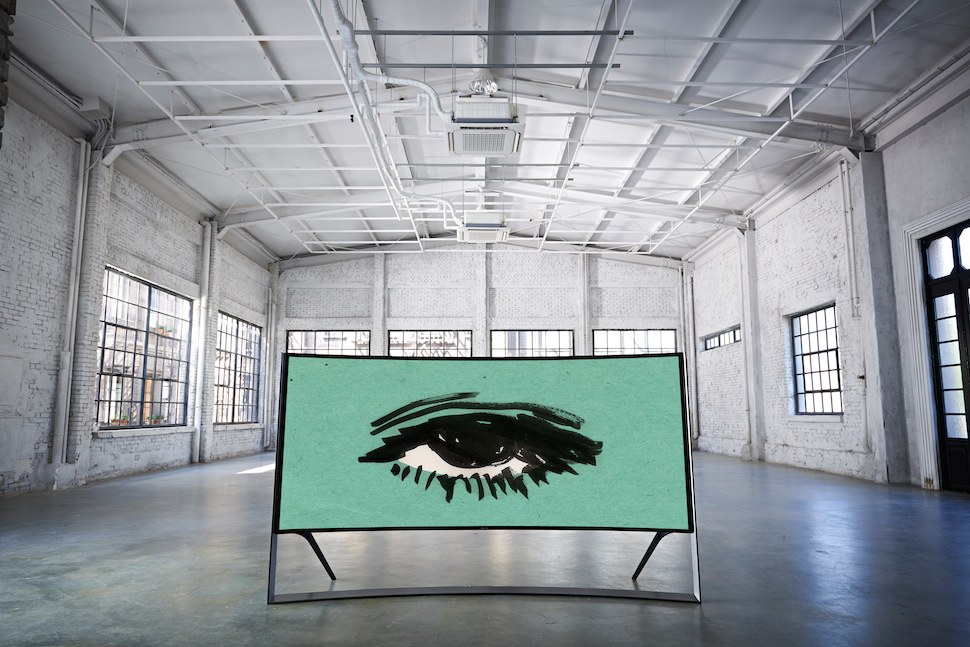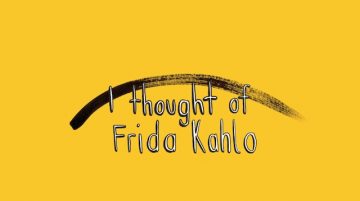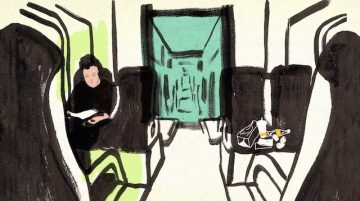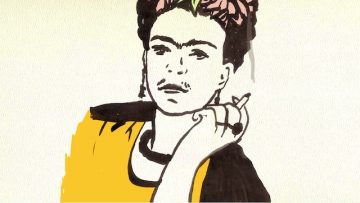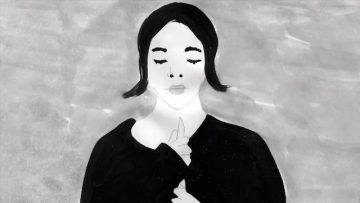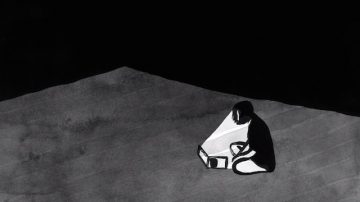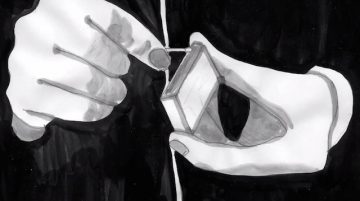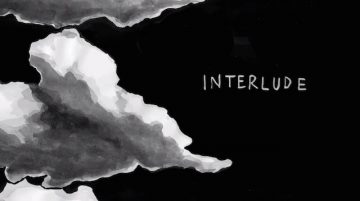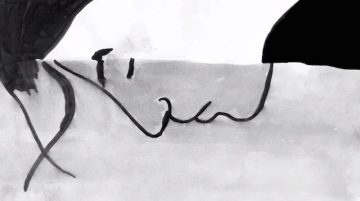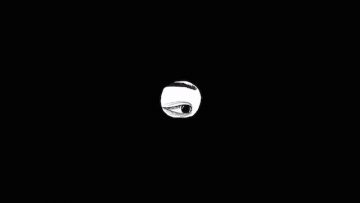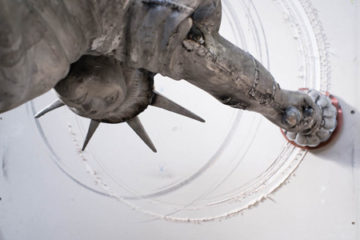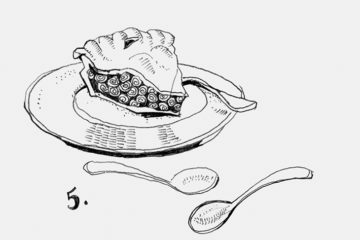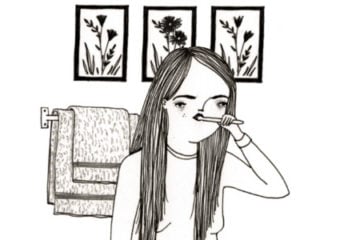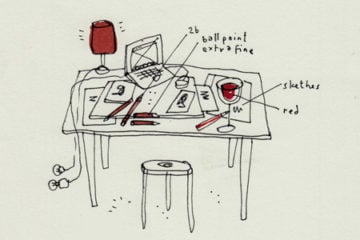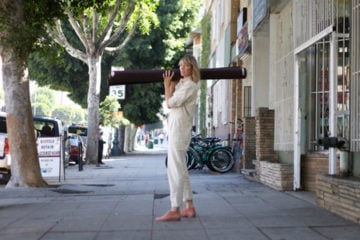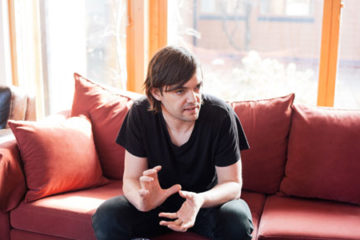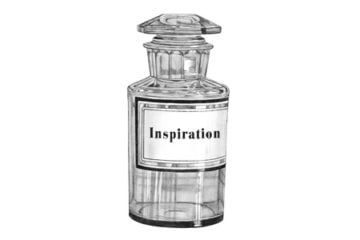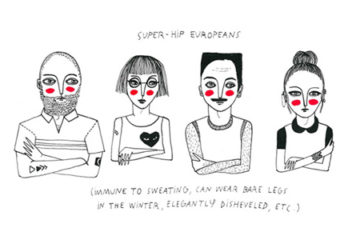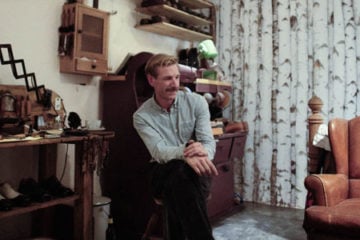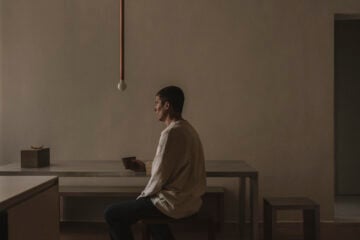Animated Ink Drawings by Katie Armstrong
- Words
- Caroline Kurze
Digital Art is a rapidly growing art form that receives more and more attention due to the internet and the improvement of technology. To show and distribute digital art is nowadays a lot easier and more efficient. A few years ago you could view video art exclusively at galleries or museums, starring on boxy little TV’s though today it is just far more mobile and in the true sense of the word more visible.
+ Read MoreKatie Armstrong, a New York-based performance, video and collage artist recently worked on a project together with Samsung and their ‘Art meets Technology’ initiative that aims to create an inspiring platform to remind people that high art and high tech are not in opposition, but rather complement each other.
Katie Armstrong showed her animated drawings for the video ‘I thought of Frida Kahlo’ which describes an encounter in a train in wonderfully sensitive words, on their Curved UHD TV S9W Timeless. We asked Katie Armstrong a few questions about her works and the importance of technology for her pieces. Enjoy.
You’re creating videos out of your ink drawings. When and how did you develop this technique?
I think my technique tends to be a direct result of the materials that I happen to have access to at any given time. I started experimenting with animation during my first year of art school, when I was still studying photography. My first animations were clumsy stop-motion videos using found materials. Then, as I switched into a more traditional fine art program in school, I began focusing much more on drawing and painting, so instead of using found materials in my stop-motion experiments, I would draw frames, and photograph them in sequential order. As soon as I had access to a scanner, I started to scan my drawings instead of photographing them.
For a while I didn’t have enough money to buy paint or ink, so I drew my frames using pencil, scanned them, and colored them digitally. A few years ago, one of my professors gave me a gift — a big jug of black Sumi ink — and that became my main medium. I’ve become quite attached to the way that ink and gouache look; the softness of the drawings, and the quality they have when they move, so I have stuck with this material for the time being.
Where does the sound come from?
I often ask myself the same question! The sound comes from me, either in the form of home recordings, or live performance, but I don’t know if I can really take credit for it. I feel like the words and melodies come from a mysterious place.
When I first started making animations, I was interested in pop music, and I would make my own cover versions of well-known tunes, like Britney Spears’ “…Baby One More Time”. I think using pop songs as references in my work was a method for me to give people a way in, a familiar touchstone, easier access.
As I keep working, I’m trying to trust my own musical instincts to create original soundtracks. Sound is a powerful thing, and I find a lot of solace in making noise. I also think sound is able to transform a space unlike any other medium, particularly when it comes to building a specific mood or atmosphere.
You are currently viewing a placeholder content from Vimeo. To access the actual content, click the button below. Please note that doing so will share data with third-party providers.
Where do you find inspiration for the stories you develop?
I wouldn’t say that I necessarily develop stories. When stories arise in my animations, that’s the result of the imagery telling the story to us, myself included. I think when we see images displayed in succession, we feel compelled to suss out a narrative, and to me, that narrative is much more interesting and personal if I don’t over-explain, or attempt to exercise too much control. I try to instead create something that is open, so that the viewer can have ample room to project and interpret.
For me, the work is really about organizing the experiences and feelings that I tend to store up over time, things that I suspect are shared and deeply universal. It’s about communicating something that can’t quite be communicated using words, images, or sound alone, and instead can only be articulated when the mediums are working together. My stuff leans heavily on rhythm and poetry.
The imagery comes to me from living, from daydreams, from memories, from photos I’ve seen online, from films and commercials, media that already exist in the word. What I end up drawing in the studio on any given day depends on what bubbles up out of my internal hard-drive. I tend to trust that whatever it is I’m trying to get at in the work will reveal itself to me as long as I just keep working. I will draw for months, scanning and animating fragments of sequences as I go. During that time I will also make audio recordings, storing different versions, layering them on top of one another, harmonizing with myself and so on. Eventually I start piecing animation sequences together, kind of choreographing them to the soundtrack. The process is slow, improvised, and meditative.
You are currently viewing a placeholder content from Vimeo. To access the actual content, click the button below. Please note that doing so will share data with third-party providers.
You created the video Interlude in Berlin. What’s it all about?
Interlude was created during my time as artist-in-residence at Axel Springer’s Plug & Play Accelerator. During this residency, I shared a co-working space with about nine small teams of burgeoning tech start-ups. I had never made work in a space like this before, and because of my surroundings, my mind wandered again and again to my own relationship with technology, to the many habits and rituals I have when interacting with my electronic counterparts.
It was a rainy autumn, and often when I wasn’t working in the Accelerator, I was spending nights at home with the windows open, wrapped in sweaters, alone in a city so different than New York, the one I had travelled from. I really enjoyed the calmer pace and the fact that my cell no longer received service. All of the images and sounds in Interlude were influenced by these thoughts and feelings. I guess at its root, this animation is about how strange and often wonderful it feels to experience solitude in a very ‘connected’ world. I don’t think technology is bad, or that social media is destroying the world, I’m just interested in how our lives tend to revolve around these things.
You are currently viewing a placeholder content from Vimeo. To access the actual content, click the button below. Please note that doing so will share data with third-party providers.
You just worked together with Samsung and showed your work on their exclusive luxury TV screens. How important is the quality and designs of the screens for your work?
Admittedly, this is something I am only very recently thinking more about. Making the work has always been the part I have spent the most energy focusing on, and it’s a bit of a luxury to get to have options when it comes to this stuff!
That said, I do think screen quality makes a huge difference in the experience of watching my work. I need technology — projectors or screens or monitors or TVs — in order for my work to exist, and I’m most satisfied when the quality of the gear is so good that you forget you’re looking at a screen, or experiencing something digital altogether. Pixelation, stuttering, and color shifts are examples of the kind of digital reminders we have to risk coming in contact with when we’re trying to experience video art, and that can be completely distracting if that’s not an integral part on the work itself.
What possibilities does technology offer for the future of art? (both regarding artists and gallerists/art collectors)
For someone making things that can easily be seen and shared online, technology allows my work to transcend geographical barriers and reach people that may have never had the chance to see it in a gallery setting. Phones and tablets and tiny computers allow digital or web based art to be experienced almost anywhere, anytime, and there is something beautiful about that level of accessibility. Every so often I’ll get an email out of the blue from some kind human out in cyber space who was moved to reach out after watching one of my videos. I’ve gotten letters from all over the world, and the gratitude I feel for that is almost crushing.
Artists like Rafael Rozendaal are already figuring out new ways to make and sell digital art. I don’t know that I necessarily have all the answers, but I think collectively, the work will continue to evolve as technology does.
In collaboration with Samsung
